Why would we want to plant more plants that do not attract bees? Are bees not in danger of extinction? Well, there are many people, including clients of mine, who are allergic to bee stings, and yet want a beautiful landscape to enjoy. We can plan their landscapes to include flowers that are less attractive to bees.
Finding any flowers that do not attract bees has been a challenge however. Before we get to the plants, we need to know what bees are attracted to, and why. I am including all bees in this list, as research is limited by species. Most people are just allergic to honeybee or wasp stings, but bumblebees and even sweat bees can have a nasty sting when provoked.
What colors do bees see and how do we know?
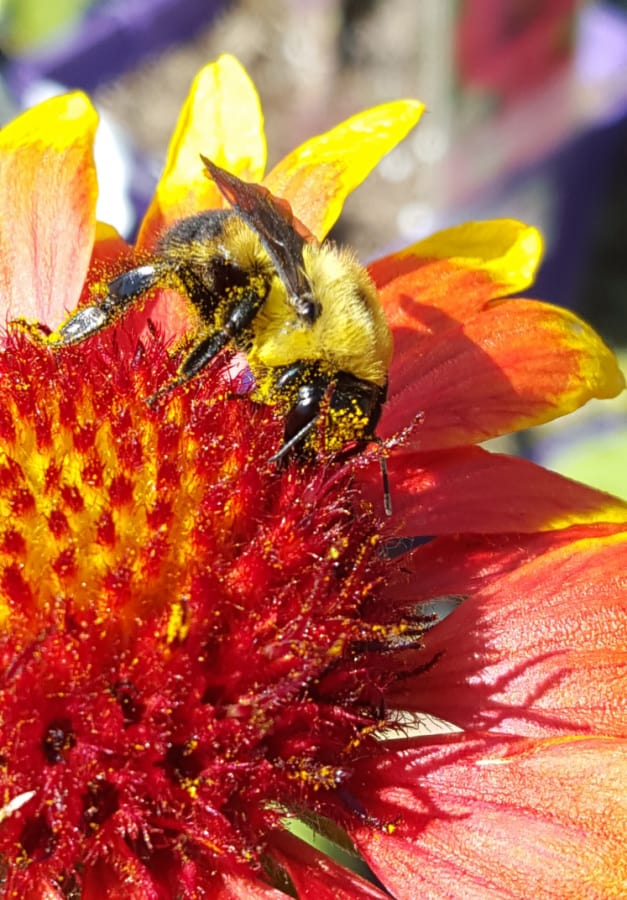
Bees see quite a different range of colors in comparison to humans. We know this because scientists and researchers have studied bees reactions to different sugar-water feeder colors. Studying a bee’s range of vision is helpful in preventing their future downfall. If we know what colors they are most attracted to, then we can plant more flowers that will provide them with nectar and pollen.
Bees can see most colors from orange to ultraviolet (which humans cannot see), but they cannot see infrared or red. This knowledge is especial for this post, though red is not an easy to find color even in plants. Becuase most plants need pollination by insects or animals to produce viable seed, God created them in close association with bees.
How can we use this knowledge of bee’s vision to benefit gardeners? Bees see red and infrared as black. Now, some flowers may use red as an alternation between other colors, almost creating a landing strip light section to draw bees into the heart of the flower. If you see a pattern of red and yellow like on Blanketflower (Gaillardia species), then you know that plant has a pattern to attract bees to the center.
Plants with Red Flowers that Bees are Less Attracted to
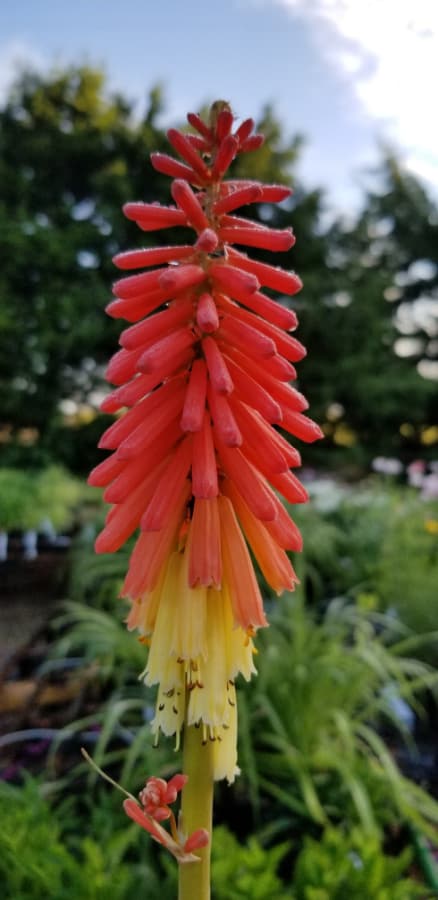
As long as wee steer away from flowers with patterns of alternating colors such as red and yellow, we should be able add such flowers to the garden that are less attractive to bees, just by flower color. But what are the best red flowers that do not attract bees?
Perennial Flowers that do not attract bees
- Red lilies – there are several species and cultivars of oriental lilies that have a dark red to bright red color. They make large mounds in the garden over time.
- Yarrow ‘Paprika’ – this is an older cultivar of yarrow which holds a strong red color during bloom time.
- Hummingbird Mint (Agastache) – there are several red flowing species that only attract hummingbirds
- Red Hot Poker – this heat loving perennial is a short bloomer, but the flower shape and red color deter bees
- Cardinal Flower – a native perennial for bog or rain gardens with pure scarlet flowers.
- Maltese Cross – while there are pink variations, most cultivars are red and not attractive to bees
- Chrysanthemums – most mums are double flowered without pollen or nectar, thus no attraction to bees.
- Roses – they may be pretty, but few bees will pollinate newer cultivars like ‘Knockout’, ‘Easy Elegance Series, or Drift Series.
Many other species may have red flowers that are less attractive to bees, but they often have yellow centers that bees may stumble into.
Annual and Tropical Flowers that do not attract bees
- Petunia – red varieties are not attractive to bees, though I have seen bumblebees checking out other colors
- Celosia – both the flower structure and the red color are abhorrent to bees
- Cardinal Vine – this red flower is a favorite of hummingbirds, but bees stay away
- Marigolds – another double flower plant that is difficult for bees to penetrate
Can we use a bee’s sense of smell to deter them from the garden?
Now, knowing what we know about a bee’s vision, what can we learn about their olfactory sense? This means their sense of smell. Bees are very good at noticing the slightest whiff of scent on the breeze, and can determine easily if it is something that they want to pollinate. One thing to remember, is that bees do not pollinate on purpose or because we want them to. They pollinate on accident, trying to get nectar or pollen to take back to their brood.
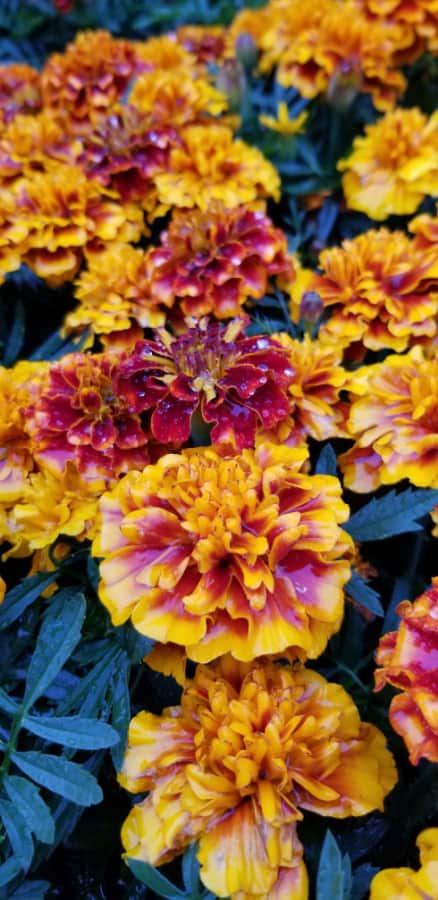
Becuase their sense of smell is so strong, there are a number of plants that may deter bees with their fragrance. Highly aromatic plants may be the thing to add to the garden, especially in sensitive areas, such as patios or pools, where a lot activity goes on. What are some of the aromatic plants that do not attract bees, but deter them?
The following flowers can be added to the garden to repel bees (and wasps!)
- Basil – this aromatic herb is great for pasta night, as well as repelling bees
- Geranium – several scented cultivars repel not only bees, but mosquitoes and wasps as well
- Marigolds – bees not only do not pollinate these annuals, but are also repelled by them
- Artemesia – wormwood or other members of this genus are very aromatic, and have both scented leaves and flowers that repel insects
There may be other strongly aromatic plants that repel bees, but they are not yet known. Try some in your garden to see how they work.
Other ways that may reduce the number of bee populations in your garden
While planting flowers to repel or keep bees at bay is the most desirable thing for a gardener to do, there are some cultural practices that can prevent bees from nesting in the landscape. These practices may also reduce bird nesting potential, but that is always a downside when trying to prevent species from being in the landscape.
- Remove brush piles – many cavity nesting bees may use hollow sticks in brush piles.
- Paint wood porches – carpenter bees like to nest in wood that has been unpainted.
- Mulch the garden – many bees and wasps nest in the ground, and prefer bare ground under plants. Apply mulch or other ground coverings to prevent these nests.
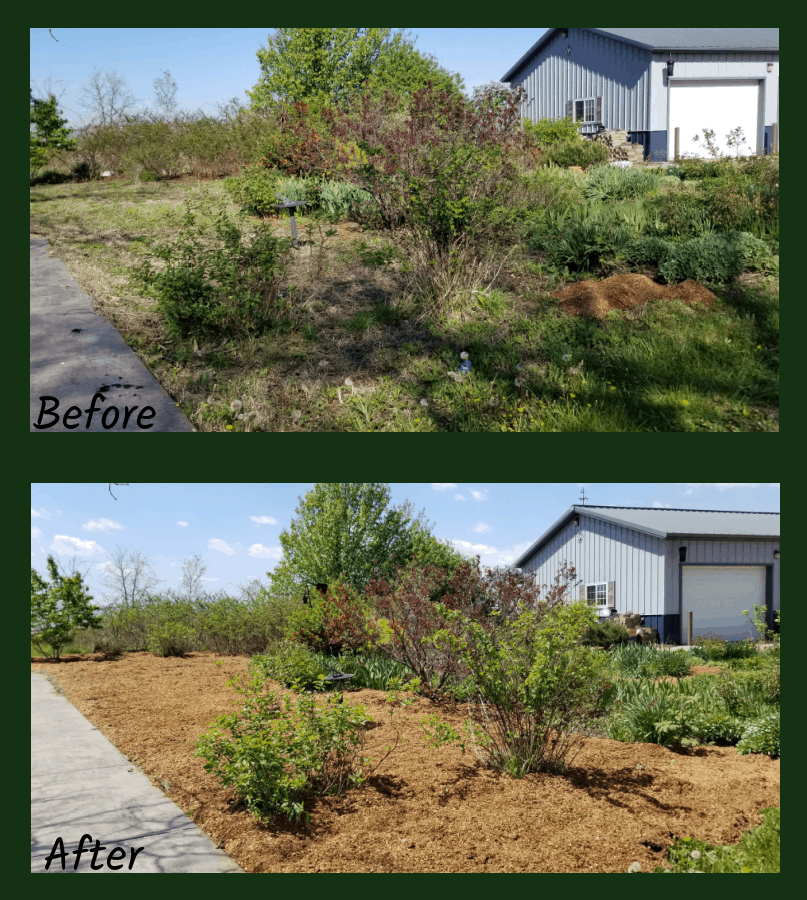
What not to do to keep bees at bay
I would NEVER recommend applying pesticides to remove bees from the garden or landscape. Bees are a very important part of the ecosystem and if the above practices cannot change their presence in the garden, then you must learn to live with them.
Conclusion
While bees are an important part of the ecosystem, and most gardeners try to attract them, some individuals are highly allergic to any and all bee stings. Therefore, it may be necessary to apply preventative cultural practices or plantings to prevent bees from being overly active in the garden.
Happy planting!

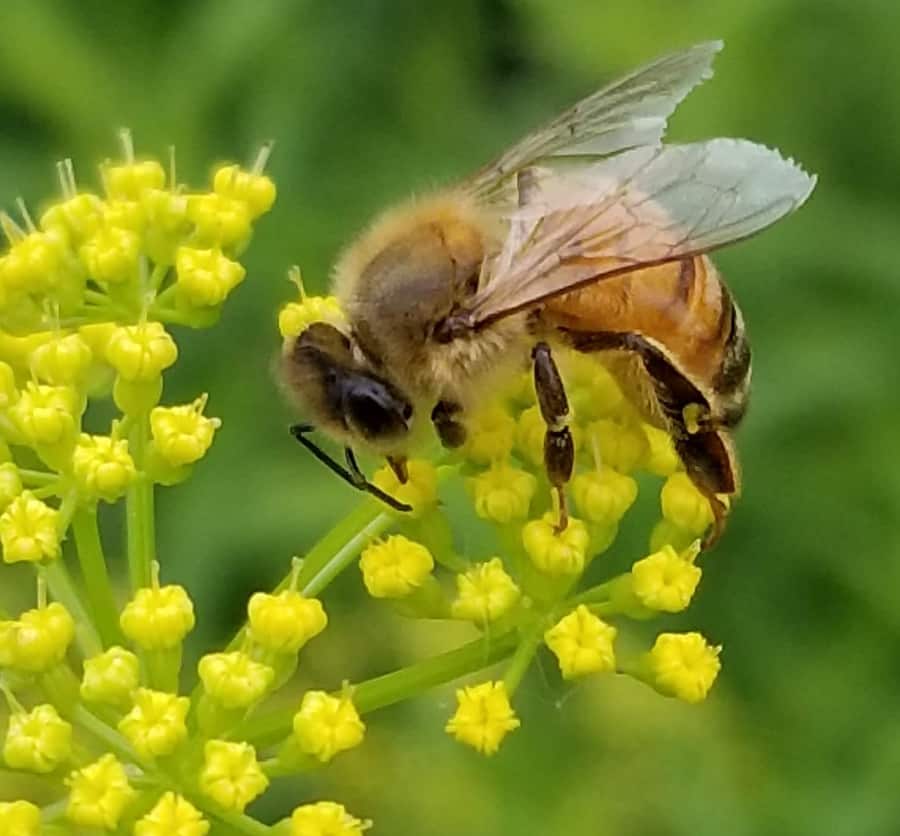



Thank you! Great info!
Thanks! Red it is. I have a mailbox flower box and I want to plant something that won’t annoy (or hurt) my mailman.
Being highly allergic to bees I thank you for your attention to those of us who love gardening!
I moved into a new home and want a garden. But the bees and wasps are everywhere! I know that I am allergic to at least one of them and I am deathly afraid. I see that red flowers keep being mentioned as the best flowers to choose. However, what if I want color in my front plant bed (around the front of the house), but I also need to deter the bees and wasps? I see marigold, but won’t the yellow marigolds attract them as well?
Hi Ali, thanks for your question. There is no true way to prevent bees from the landscape, even a Japanese Rock garden will attract ground nesting bees. But we can limit the amount of bee exposure and presence. If plants are blooming and not attracting bees, then they are attracting something else. The biggest thing to remember is that as long as you do not handle the bees, or mess with their home or nest, they will mostly leave you alone. Plants with double or triple blooms are the least likely to attract bees, because the blooms are too much work for most bees to get into, and often they are sterile. These include marigolds, many hydrangeas, roses, rose of Sharon, and other plants.
Any idea on a ground cover that bees may avoid? I read about juniper but we do not like the look of that.
Appreciate your help
Hi Stephanie,
It depends on sun versus shade. I doubt that there are any full sun groundcovers which do not attract bees, other than junipers. You might see bees less on plants like Aronia ‘Ground Hog’ or Mahonia repens, but only because they have short bloom periods. For shady spots, Vinca minor blooms before many bees are out.
Thank you for your inquiry,
Andrew
Well,Basil is one of the herbs I grow to
feed the pollinators and the bees are all over it!And of course they adore wild geraniums.
HI Helen, thank you for your comment. Yes, the flowers of basil are great for many pollinators, including bees. However, for those wanting to grow basil for consumption, flowers should be removed to improve the flavor. There are also several varieties which do not flower and the scent of the leaves can deter some types of bees away. And the geraniums which I am speaking of are not true geraniums, but pelargoniums, which can come in a variety of scents, including lemon, and citronella, which help deter insects.
The Kansas Gardener
Allergic to honey bees, but love roses. Is there any way to prevent them and yellow jackets around roses and prevent them and ants from peonies
I cannot think how you would keep honeybees away from roses completely. You could plant double flowering varieties, which unfortunately usually have no or little fragrance. But because of the higher petal count, they mostly prevent pollinators from getting to the floral parts. But there are always a few bees checking things out. Bees are only a problem if they sting you, which they are very unlikely to do, unless you are threatening their home or handling them. When bees of any kind are on flowers, I have never been stung when working among the flowers, not once in over 20 years of gardening, both professionally and at home.
As for keeping bees, wasps, and ants off peonies, that would be even more difficult. Peonies have extrafloral nectaries which excrete nectar for attracting ants and wasps, which provide protective services for the peonies against aphids, caterpillars, and other pests.